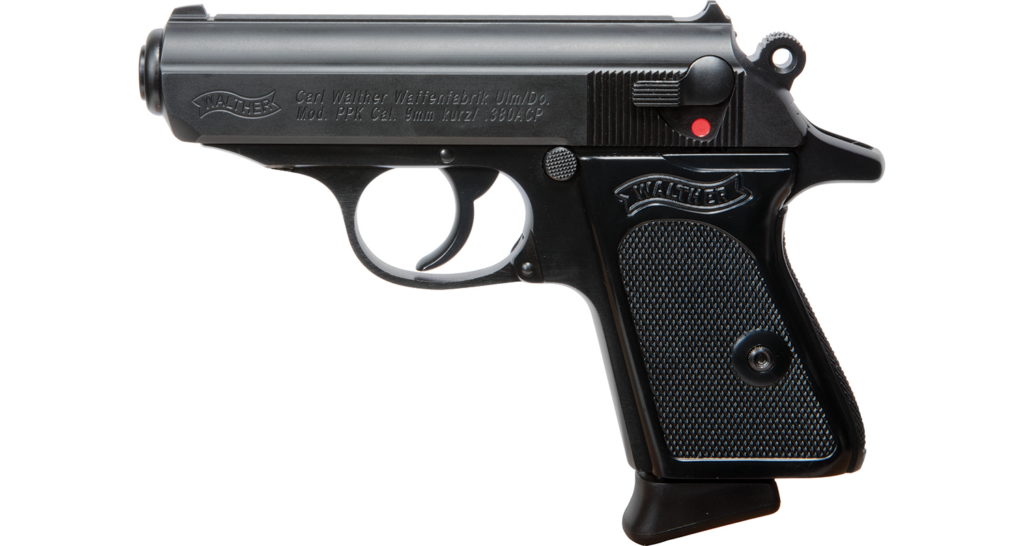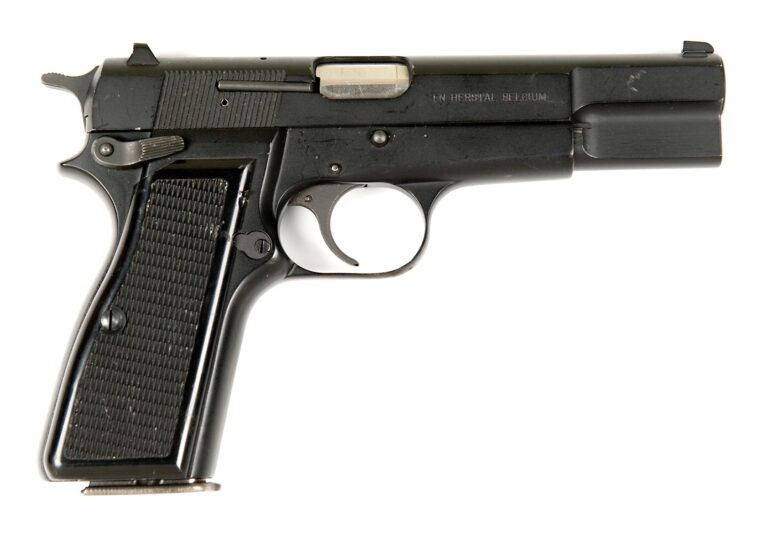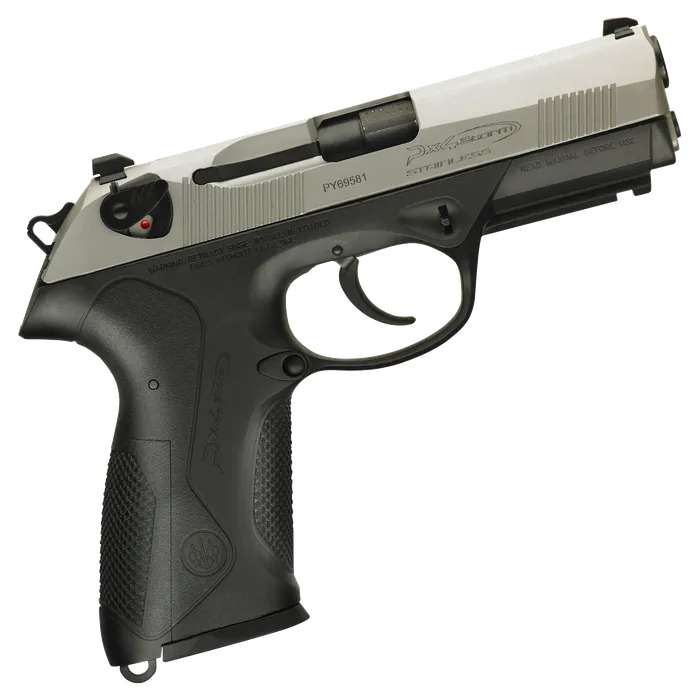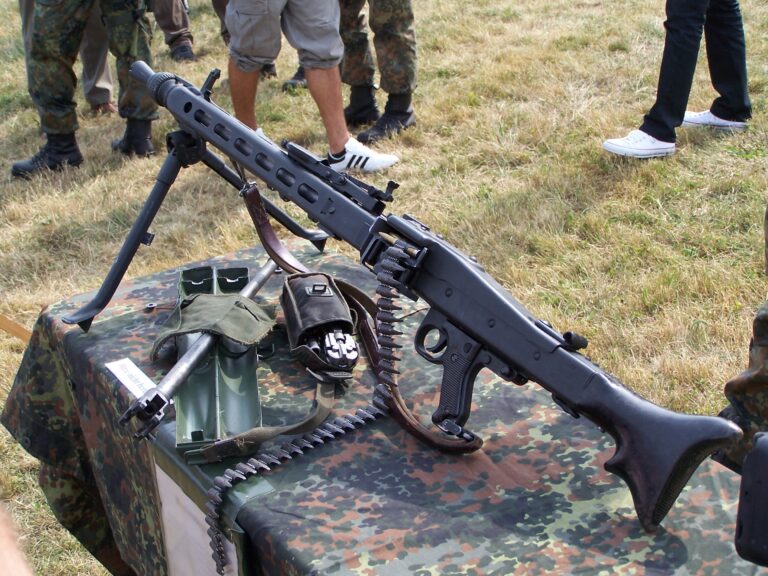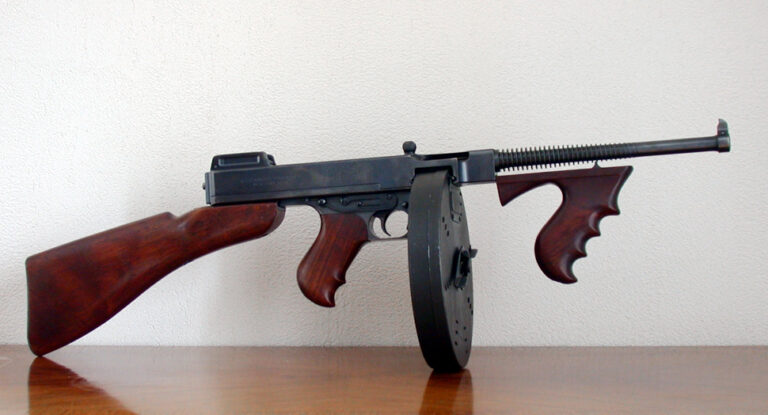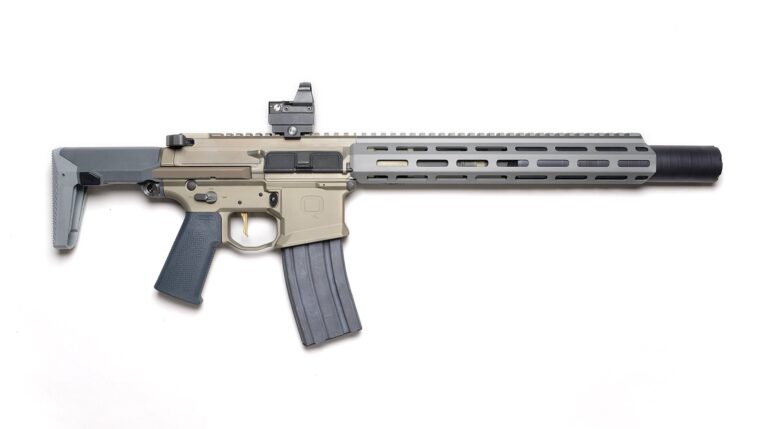Introduction
The Walther PPK, an acronym for “Polizeipistole Kriminalmodell”, is the epitome of elegance and innovation in compact handguns. Designed in the 1930s, this revolutionary semi-automatic pistol quickly won over law enforcement agencies and civilians alike for its reliability, discretion and ergonomics. Its worldwide fame exploded thanks to its iconic role in the James Bondfilms, becoming a cultural icon and a technical benchmark. This article takes a closer look at the origins, technical features and lasting impact of this masterpiece of German engineering.
Origin and design of the Walther PPK
The Walther PPK was born of the need for a compact, easily transportable and effective weapon for law enforcement. The success of the Walther PP, launched in 1929, provided the basis for a lighter, more discreet version. With the PPK, introduced in 1931, Carl Walther marked a new stage in the evolution of semi-automatic handguns. One of the PPK’s major innovations is its double-action mechanism. This system enables the shooter to cock the hammer and fire the first round without having to use the safety lever. This advance has not only simplified use of the weapon, but also enhanced its safety when carried. Because of its compactness and discretion, the PPK was adopted by plainclothes police officers and investigators, who needed a reliable, easily concealable weapon. It also found an audience among civilians, thanks to its ability to combine aesthetics and effectiveness.
Technical and ballistic specifications
The Walther PPK is a pistol distinguished by its balance of robustness, precision and ease of use.
–Available Gauges: Mainly chambered in 7.65 mm Browning (.32 ACP) versions are also available in 9 mm Kurz (.380 ACP) and .22 LR for training.
–Magazine capacity: 6 to 7 cartridges depending on caliber, optimized for a compact profile.
–Total length: 155 mm, for exceptional manoeuvrability.
–Barrel length: 84 mm, offering enhanced precision for a pistol of this size.
–Empty weight: 568 g, light enough to be carried without discomfort, but heavy enough to stabilize recoil.
Construction: Forged steel or light alloy for modern models, guaranteeing long-term durability.
Mechanism: Non-locking breech, suitable for low and medium-power calibers, combined with a fluid and reactive double action.
The PPK’s ergonomic design, including its angled grip and well-positioned center of gravity, ensures a firm, comfortable grip. This is crucial to maintaining accuracy and control, even when shooting fast.
Performance and Practical Use
The Walther PPK is renowned for its unrivalled reliability and ballistic performance suited to short-range engagements. Its compact design makes it a preferred choice for concealed carry, whether by civilians or law enforcement officers. Its accuracy is remarkable for a weapon of this size, thanks in particular to its fixed barrel. Recoil is moderate, even with calibers like the 9 mm Kurz, due to the weapon’s weight and steel construction. This makes the PPK accessible to a wide variety of shooters, from beginners to experts. The PPK’s technical features, such as double action and safety lever, make it a safe weapon for everyday carry. Its mechanical simplicity guarantees easy maintenance, a key advantage for regular users.
The Walther PPK in James Bond
The Walther PPK owes much of its worldwide fame to its role in the James Bond films. In Ian Fleming’s original novels, Bond originally carried a Beretta 418, but this was replaced by the PPK in the film Dr. No (1962). This change was introduced on the recommendation of Major Boothroyd, known as “Q”, who considered the PPK a more powerful and reliable weapon for a secret agent. The PPK has appeared in such cult films as Goldfinger, Thunderball, The Man with the Golden Gun and GoldenEye. Its compact, elegant silhouette perfectly reflected James Bond’s sophisticated style and fearsome efficiency. Although more modern models, such as the Walther P99, have been introduced in recent films, the PPK remains inseparable from the classic image of Agent 007. This association has not only boosted the PPK’s commercial popularity, it has also helped to make it a cultural icon, representing both elegance and power.
Comparison with other compact weapons
The Walther PPK is often compared to other compact pistols, but it stands out for its timeless design and technical features.
Beretta 1934: Although reliable and compact, the Beretta lacks the technical sophistication of the PPK, notably its double-action mechanism.
–SIG Sauer P232: This modern model offers similar performance, but lacks the historical heritage and aura of the PPK.
–Glock 42: With its polymer construction, the Glock 42 is lighter and adapted to modern standards, but it can’t compete with the precision and elegance of the Walther PPK.
Cultural impact and heritage
Beyond its technical features, the Walther PPK has left its mark on history by becoming a cultural symbol. Its popularity extends far beyond the military and civilian sphere, thanks to its role in the James Bond franchise. In addition to its cinematic influence, the PPK has been used by law enforcement agencies around the world. It is also prized by collectors, who see in it a perfect combination of design, performance and history.
Conclusion
The Walther PPK is much more than a handgun. It represents a perfect fusion of advanced technology, timeless design and cultural impact. Compact, reliable and elegant, it remains an essential reference in the history of firearms. Whether for its role in personal defense, its use by law enforcement or its aura in popular culture, the PPK remains a timeless icon, admired and respected the world over.

